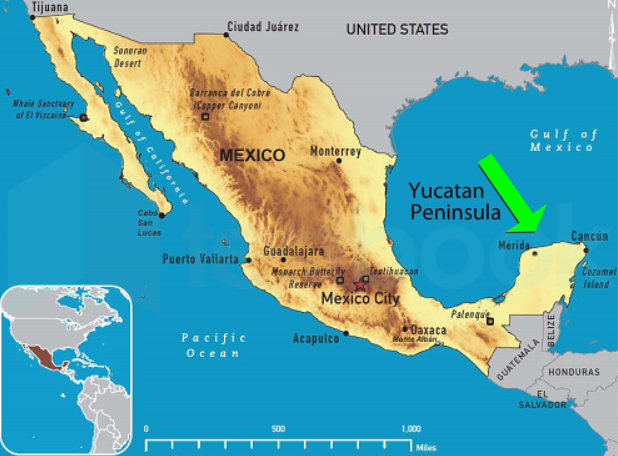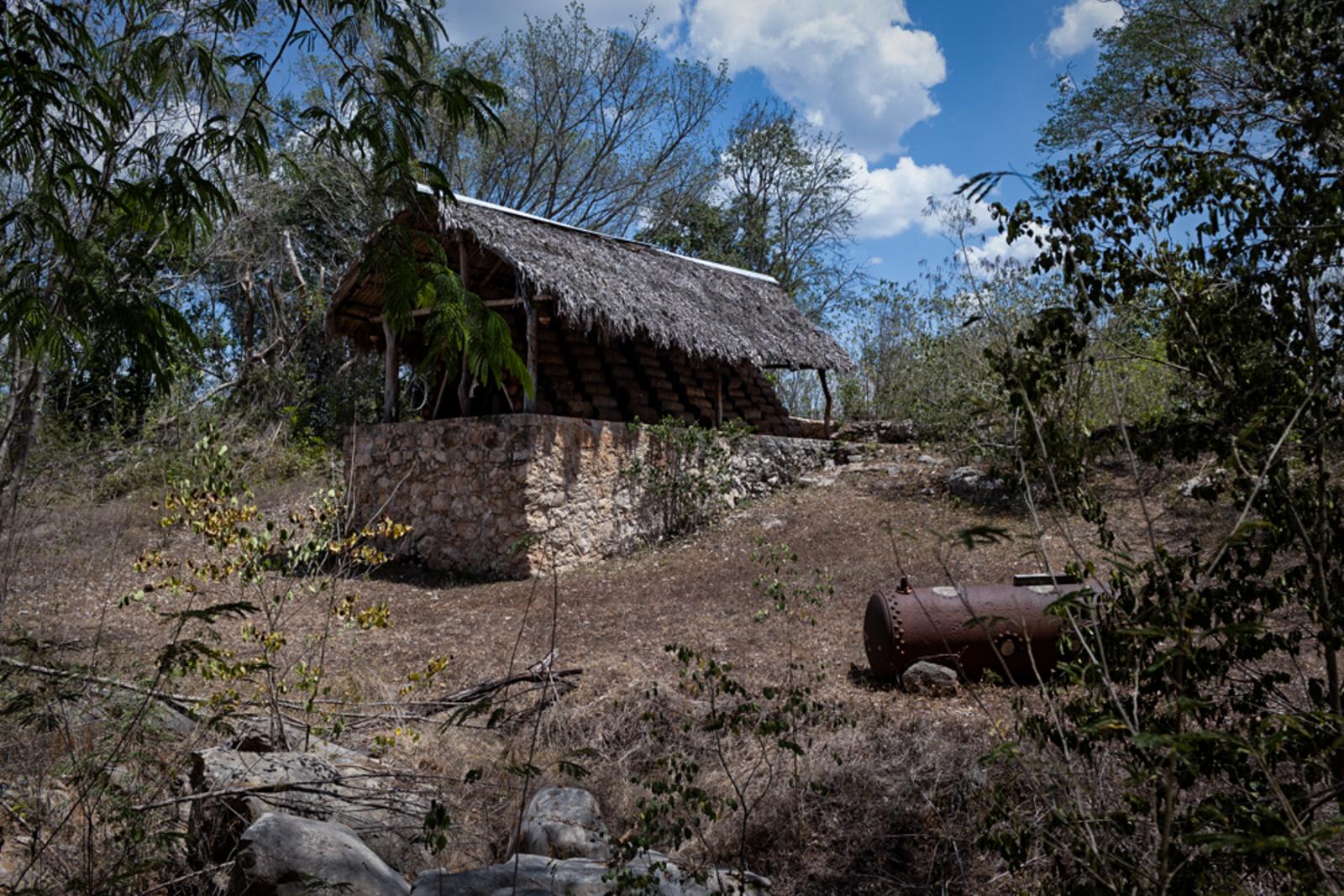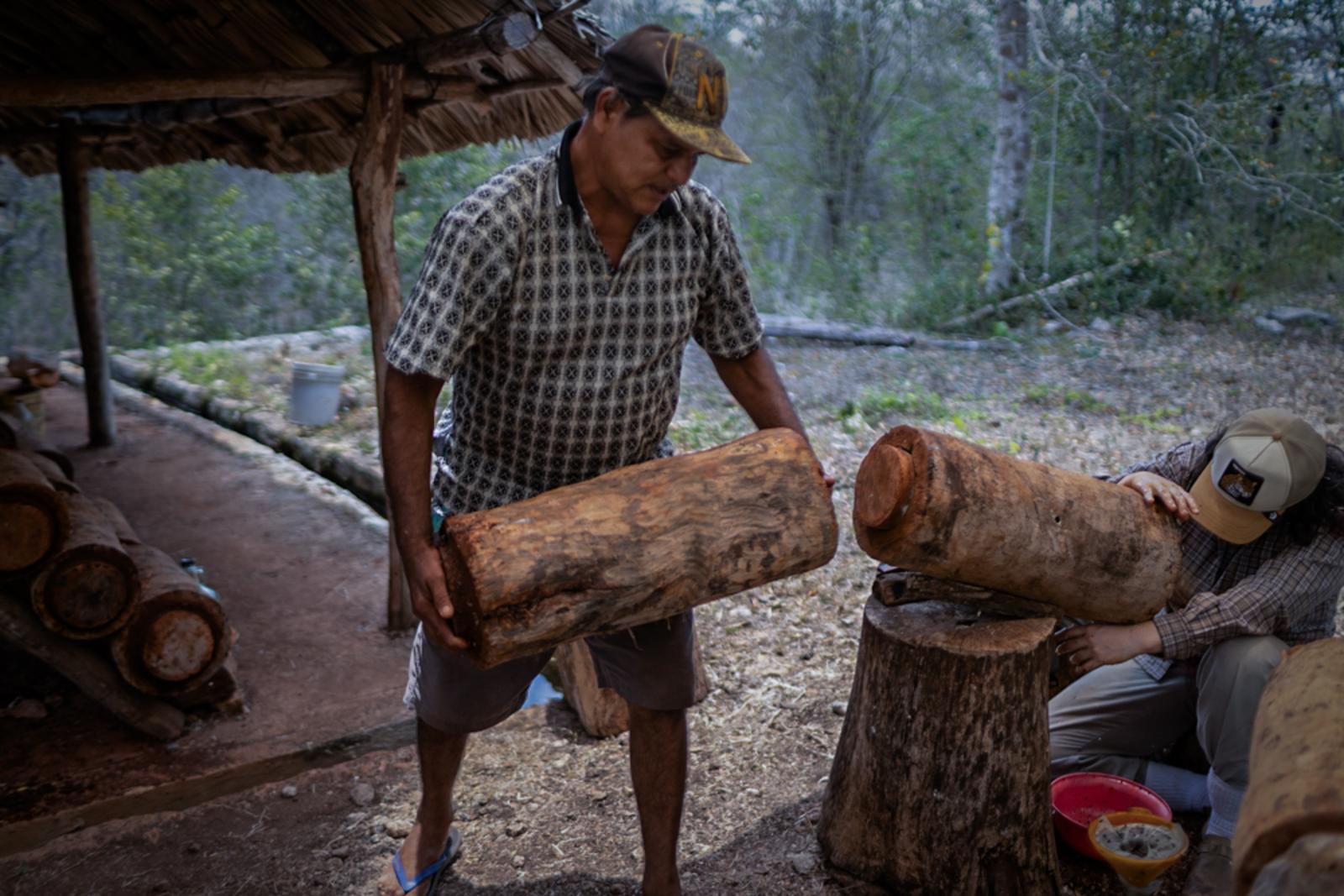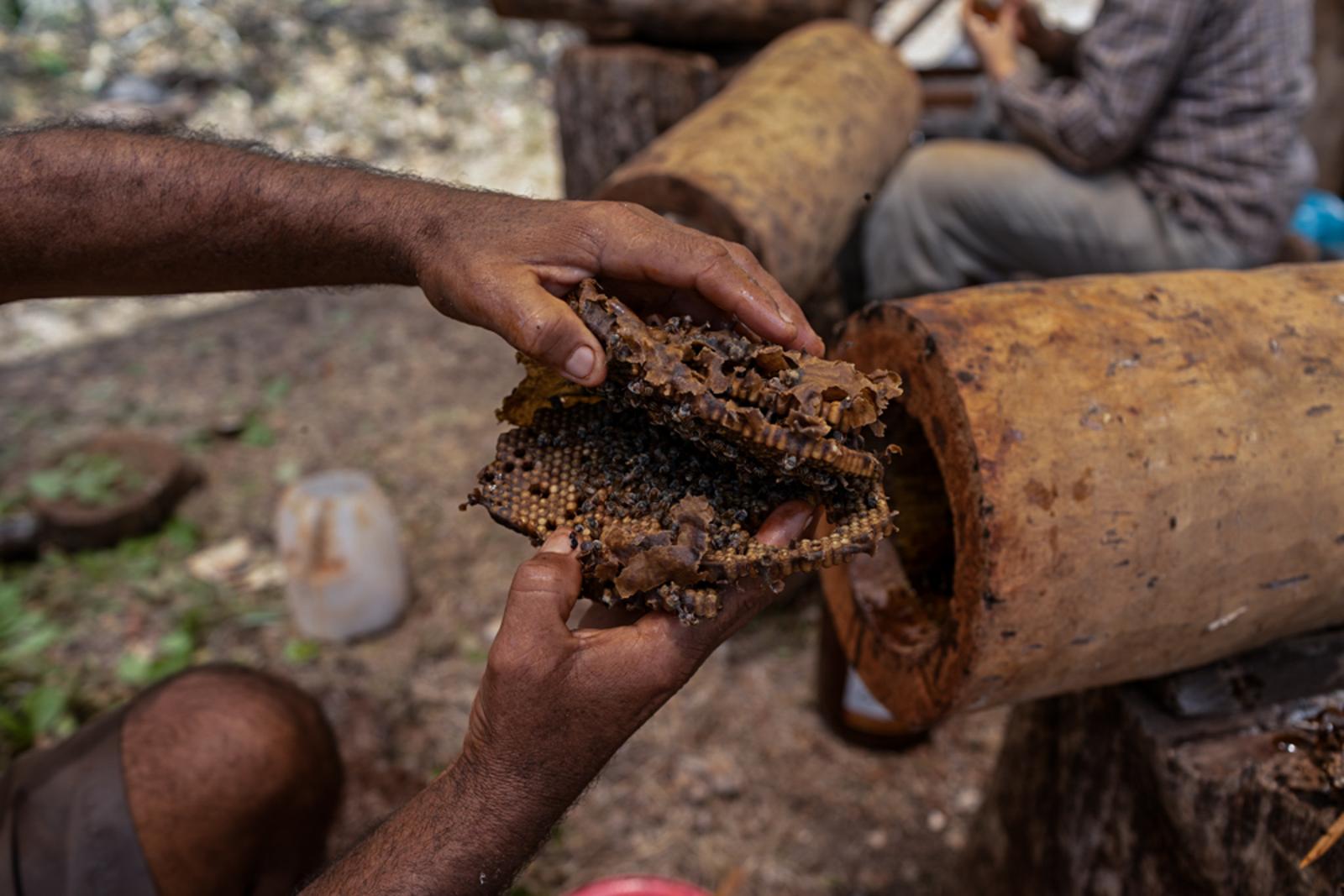
Locally referred to as Maripona, the Melipona bee is known in the Mayan language as Xunan Kab, meaning "lady bee." These bees are indigenous to the Yucatán Peninsula and have played a vital role in Mayan civilization for centuries. Father Luis speaks of them with reverence: "These bees are not just insects; they are a sacred legacy."
Historically, the Maya considered Melipona bees sacred, using their honey in food, medicine, and religious ceremonies. The honey, treasured for its rarity and healing properties, it is believed to possess antibacterial and antifungal qualities. Unlike the more widely known European honeybee (Apis mellifera), Melipona bees are stingless, making them safer to work with and ideal for traditional Mayan meiponicultors practices.
"Their honey is different," Father Luis explains. "It has a tangy taste, a special texture, and it heals. That is why our ancestors cherished it."
Melipona bees are also crucial pollinators in the Yucatán ecosystem. They play an essential role in fertilizing a variety of crops. Their ecological contribution goes far beyond honey production; they sustain biodiversity.
Traditional Melipona hives, called jobones, are hollowed-out logs carefully placed in shady, quiet areas. Remarkably, the bees themselves choose these logs, forming a natural bond between the colony and its keeper. "You don't impose the hive on the bees," says Father Luis. "You wait for them to accept it."
However, the future of the Melipona bee is at risk. Father Luis has witnessed the growing threats firsthand: widespread deforestation and the increased use of pesticides have drastically reduced wild bee populations. As modern agriculture encroaches upon natural habitats, the ancient bond between the Maya and the Xunan Kab faces unprecedented strain.
Melipona bees produce far less honey than their European counterparts, making each drop even more valuable. This limited production contributes to the honey's high demand and cultural significance. "People ask me why I don't switch to other bees," Father Luis says. "Because it’s not about quantity. It’s about meaning."
Despite the challenges, there is hope. Across the Yucatán, a cultural revival is blooming. Young beekeepers are learning traditional methods, researchers are documenting the bees' medicinal benefits, and community leaders like Father Luis are working to preserve this vital part of Mayan heritage. His farm in Maní serves as both a teaching center and a living archive of ancient knowledge.
"As long as we protect them," he says, watching the bees hover around a flowering tree, "the Xunan Kab will continue to bless our people."
The ancient lady of the Yucatán lives on—in the quiet care of a devoted beekeeper, in the hum of the jungle, and in every sacred drop of honey she creates.










